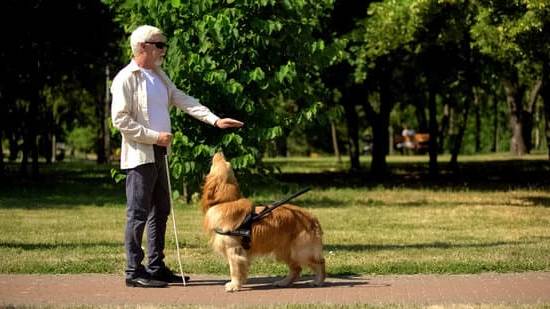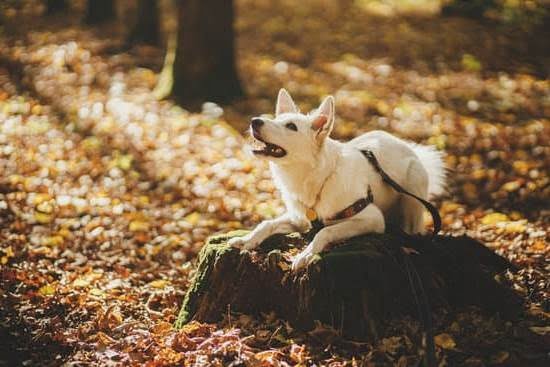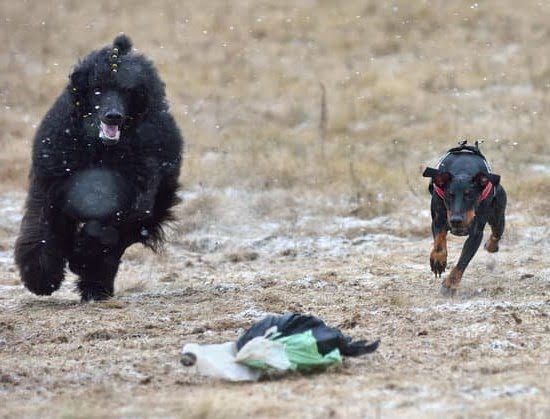Crate training is often associated with puppies, but many dog owners wonder if it is feasible to crate train an older dog. In this article, we will explore the possibility of crate training for older dogs and highlight the potential benefits it can bring. Contrary to popular belief, crate training can be a helpful tool in addressing various behavioral issues and providing a sense of security for your furry friend.
Often, older dogs may have already established certain habits or behaviors that can be challenging to modify. However, crate training can help create structure and establish boundaries, which can be particularly beneficial for older dogs who may struggle with anxiety or confusion.
Additionally, crates offer a safe and cozy space where dogs can retreat to during times of stress or when they need some solitude. By debunking the misconception that crate training is only suitable for puppies, we hope to encourage dog owners to consider this option for their older companions.
Before embarking on crate training with your older dog, it is important to assess their suitability for this type of training. Just like humans, every dog has its own temperament and personality traits that should be taken into consideration.
It’s crucial to evaluate how well your dog handles confinement and any past experiences they might have had with anxiety or fear in similar situations. By understanding your dog’s individual needs and potential challenges upfront, you can tailor the crate training process accordingly and ensure a positive experience for both you and your furry friend.
In the next sections of this article, we will delve deeper into the specifics of crate training an older dog. We will provide step-by-step guidance on introducing your dog to the crate gradually while emphasizing positive reinforcement techniques. We will also discuss different types of crates available in the market and offer advice on selecting the ideal one based on your dog’s breed and size.
Furthermore, we will address common challenges that may arise during the process and provide troubleshooting tips to overcome them. Stay tuned to discover how crate training can be a rewarding and transformative experience for your older dog.
Assessing the Suitability of Your Older Dog for Crate Training
When considering crate training for an older dog, it is important to assess their suitability for this type of training. Not all dogs are well-suited for crate training, and it is crucial to evaluate their temperament and past experiences before beginning the process.
One key factor to consider is your dog’s temperament and personality. Some dogs naturally feel more comfortable in confined spaces, while others may become anxious or stressed. Dogs that have a calm demeanor and show signs of enjoying cozy spaces may be more suitable candidates for crate training. On the other hand, if your dog tends to be nervous or exhibits signs of high anxiety, it might be necessary to explore alternative methods of confinement or seek professional guidance.
Additionally, it is essential to consider any past experiences your older dog may have had with confinement or anxiety. If your dog has previously experienced trauma or negative associations with being confined, crate training may not be the best option. It is crucial to prioritize your dog’s emotional well-being and choose a method of confinement that promotes a sense of safety and security.
Before embarking on crate training, take the time to carefully assess your older dog’s temperament and past experiences. By doing so, you can determine whether crate training is a suitable option and make an informed decision that best meets your dog’s needs.
| Factor | Suitability |
|---|---|
| Temperament | Calm demeanor, enjoys cozy spaces |
| Past Experiences | No trauma or negative associations with confinement |
The Importance of Proper Introductions
Properly introducing your older dog to the crate is a crucial step in successfully crate training them. It is important to take a step-by-step approach and ensure that your dog feels comfortable and safe in their new space. Here is a guide on how to introduce your older dog to the crate:
- Familiarize Your Dog with the Crate: Start by placing the crate in an area where your dog spends most of their time. Keep the door open and allow your dog to explore it at their own pace. You can encourage them with treats or toys, but never force them into the crate.
- Create Positive Associations: Gradually associate positive experiences with the crate. Place treats or their favorite toys inside the crate, so they associate it with something enjoyable. You can also feed them near or inside the crate to create positive associations.
- Encourage Exploration: Once your dog seems comfortable being near and around the crate, encourage them to step inside using treats or toys as rewards. Do not close the door initially; let them feel free to come in and out as they please.
- Secure the Door: Once your dog is willingly going in and out of the crate, you can start securing the door for short periods while they are inside. Stay close by and provide reassurance, praise, and treats regularly during this time.
- Increase Crate Time Gradually: Slowly increase the amount of time your dog spends inside the crate with each session. Begin with just a few minutes and gradually work up to longer durations over several days or weeks, depending on your dog’s progress.
Remember, patience is key during these introductory stages of crate training an older dog. Each step should be taken at a pace that suits your dog’s comfort level, without pushing them too far too quickly.
| Step | Description |
|---|---|
| 1 | Familiarize Your Dog with the Crate |
| 2 | Create Positive Associations |
| 3 | Encourage Exploration |
| 4 | Secure the Door |
| 5 | Increase Crate Time Gradually |
Selecting the Ideal Crate
Exploring different crate options
When it comes to selecting the ideal crate for your older dog, there are several different options to consider. The most common types of crates include wire crates, plastic crates, and soft-sided crates. Each type has its own advantages and disadvantages, so it’s important to choose one that suits both your dog’s needs and lifestyle.
Wire crates are popular because they provide good airflow and visibility for your dog. They are also collapsible, making them easy to transport or store when not in use. However, some dogs may feel exposed in a wire crate and prefer more privacy.
Plastic crates, on the other hand, offer a more den-like environment that can help dogs feel secure. They are also sturdy and durable, which is important if your dog tends to be destructive or anxious. However, plastic crates may not provide as much ventilation as wire crates.
Soft-sided crates are lightweight and portable, making them a great option for travel or outdoor adventures with your older dog. They are usually made of fabric and mesh materials which allow for ample airflow. However, it’s important to note that soft-sided crates may not be suitable for dogs who like to chew or scratch at their surroundings.
The importance of size, security, and comfort
When selecting a crate for an older dog, size is crucial. The crate should be spacious enough for your dog to stand up, turn around, and lie down comfortably. If the crate is too small or too large, it could lead to discomfort or inadequate confinement.
Security is another essential factor in choosing the ideal crate for your older dog. Ensure that the crate has secure latches or locks to prevent accidental escapes. Additionally, consider placing a cozy bed or blanket inside the crate to provide comfort and make it a welcoming space for your dog.
Lastly, keep in mind any specific needs or preferences your older dog may have. For example, if your dog has arthritis or joint issues, a crate with a low entrance or cushioned flooring may be beneficial. Understanding your dog’s individual needs and selecting a crate that accommodates them will contribute to successful crate training.
By carefully considering the type of crate, size, security features, and comfort level, you can ensure that your older dog has a positive experience with crate training. The right crate will not only keep your dog safe and secure but also provide a peaceful and comfortable space for them to relax.
The Crate Training Process
Crate training an older dog can be a gradual process that requires patience and positive reinforcement. By following a step-by-step guide to introduce your dog to the crate and using treats, toys, and praise, you can help build positive associations with the crate.
One important aspect of the crate training process is establishing a routine. It is recommended to start with short sessions in the crate and gradually increase the time as your dog becomes more comfortable. Begin by placing your dog’s bed or blanket in the crate along with a few favorite toys or treats.
Encourage your dog to enter the crate voluntarily by tossing treats inside or placing them near the entrance. Use positive reinforcement techniques, such as praising and giving treats when your dog enters or explores the crate.
During this process, it’s important to never use the crate as punishment or force your dog into it. This could create negative associations and make it harder for your dog to accept the crate as a safe and comfortable space. Instead, focus on rewarding any voluntary interaction with the crate, even if it’s just poking their head inside for a few seconds.
As your dog becomes more comfortable with being in the crate, start closing the door for short periods while you are still nearby. Gradually increase these periods of time, always making sure to monitor how your dog reacts. If your dog becomes anxious or exhibits signs of distress, take a step back and decrease the amount of time spent in the closed crate before trying again.
Remember that building positive associations takes time and consistency. The goal is for your older dog to see their crate as a cozy den where they feel safe and secure. By using treats, toys, praise, and patience throughout this process, you can help ensure that crate training is a positive experience for both you and your furry companion.
- Start with short sessions in the crate.
- Use positive reinforcement techniques like treat placement.
- Never use the crate as punishment.
Gradual Approach to Extending Crate Time
Once your older dog has become comfortable with spending short periods of time in the crate, it’s time to gradually extend the duration. This step is crucial to ensure that your dog does not develop separation anxiety or any negative associations with the crate. It is essential to approach this process with patience and take it at a pace that is suitable for your individual dog.
To start extending crate time, begin by gradually increasing the length of each session by a few minutes every day or every few days. For example, if your dog can comfortably stay in the crate for 10 minutes, increase that to 15 minutes the next day. Gradually build up the time until your dog can stay in the crate for the desired duration without any signs of distress.
During this process, it’s important to monitor your dog for signs of anxiety or discomfort. If you notice any signs of distress such as excessive whining or barking, pacing, drooling, or destructive behavior, it may indicate that you have increased the duration too quickly. In such cases, go back to a shorter duration where your dog was comfortable and proceed more gradually from there.
To prevent separation anxiety during extended crate times, make sure your dog feels secure and engaged in activities while in the crate. Provide them with interactive toys or treat-dispensing toys that can keep them occupied and entertained. You can also leave a piece of clothing with your scent on it inside the crate to provide comfort and reassurance.
Remember that every dog is unique and may require different amounts of time to adjust to longer periods in the crate. Some dogs may progress quickly while others may need more time and patience. The key is to listen to your dog’s needs and adjust accordingly.
By taking a gradual approach to extending crate time and providing positive experiences within the crate, you are setting your older dog up for success in becoming comfortable and relaxed in their new space.
Troubleshooting Common Challenges
Crate training an older dog may come with its fair share of challenges, but with patience and perseverance, these obstacles can be overcome. Here are some common challenges that you may encounter during the crate training process and practical tips on how to address them:
- Whining and Barking: It is natural for dogs to whine or bark initially when introduced to the crate. However, it is important not to give in to their demands by letting them out immediately. Instead, wait for a moment of quiet before opening the crate door. This teaches your dog that quiet behavior is rewarded.
- Reluctance to Enter the Crate: Some older dogs may be hesitant or resistant to enter the crate at first. To encourage them, create positive associations by placing treats or their favorite toys inside the crate. You can also feed your dog their meals near the crate or use a verbal cue like “crate” or “bed” as you guide them inside.
- Separation Anxiety: If your older dog experiences separation anxiety when crated, start by practicing short periods of confinement while gradually increasing the time. Provide comfort items such as a blanket with your scent or a special toy that they only have access to while in the crate. Also, try leaving on some soothing music or utilizing calming pheromone sprays to help alleviate anxiety.
When facing any of these challenges, remember that consistency is key. Stick to a routine and avoid giving in to undesired behaviors, as this may reinforce negative habits. Additionally, seek support from professional trainers or behaviorists who can provide guidance tailored specifically for your older dog’s needs.
By troubleshooting common challenges effectively, you can ensure a smoother transition for your older dog into crate training and help them feel secure and comfortable in their new space.
- Using positive reinforcement techniques.
- Treats.
- Toys.
- Verbal praise.
- Gradually increasing crate time.
- Start with short periods and gradually extend them.
- Utilize distractions such as chew toys or puzzle games.
- Seeking professional help if needed.
- Consider consulting a dog trainer or behaviorist for personalized guidance.
- Avoiding punishment or negative reinforcement.
- Crate training should be a positive experience for your dog.
- Never use the crate as a form of punishment.
- Maintaining consistency and patience throughout the process.
Maintaining a Positive Environment Outside the Crate
Providing Ample Exercise and Mental Stimulation
While crate training can be a beneficial tool for managing a dog’s behavior and providing them with their own safe space, it is important to strike a balance between crate time and exercise outside of the crate. Dogs need physical exercise to maintain their health and mental stimulation to prevent boredom or destructive behaviors.
Therefore, it is crucial to ensure that your older dog receives ample opportunities for exercise and mental stimulation even when they are not in the crate.
One way to provide exercise for your older dog is through daily walks or runs. Taking them on regular outings not only helps them burn off excess energy but also provides an opportunity for social interaction and exposure to different environments. Additionally, engaging in interactive play sessions with toys or participating in canine sports like agility can help keep your older dog active and mentally stimulated.
Creating Safe Spaces Outside of the Crate
While crates provide a secure and comfortable space for dogs, it is essential to create alternative safe spaces around your home as well. This ensures that your older dog feels secure and relaxed even when they are not confined to the crate. Designate specific areas in your home where your dog can rest, sleep, or relax comfortably, such as a cozy bed or a designated corner with soft blankets.
Another option is to provide access to gated-off areas where your dog can roam freely without being confined. Set up a baby gate in an area that is safe for your older dog to explore, such as a hallway or a small room. This allows them some freedom of movement while still ensuring their safety.
Ensuring Social Interaction
Older dogs still crave social interaction with their owners and other animals. It is important to dedicate quality time each day for bonding activities with your canine companion outside of the crate. Engage in activities that strengthen the bond between you and your older dog, such as obedience training, grooming sessions, or simply cuddling on the couch.
If you have other dogs or pets in your household, provide opportunities for socialization and playtime. Supervised interactions can help fulfill your older dog’s social needs and prevent feelings of loneliness or isolation. Additionally, scheduling regular visits to dog parks or enrolling them in group training classes can provide opportunities for positive social experiences with other dogs and their owners.
By maintaining a positive environment outside of the crate through exercise, safe spaces, and social interaction, you can ensure that your older dog remains happy and fulfilled even when they are not confined. Remember that crate training is meant to be a tool to assist in behavior management and should not replace the need for proper exercise, mental stimulation, and quality time with your furry friend.
Celebrating Milestones and Progress
One of the most rewarding aspects of crate training an older dog is celebrating the milestones and progress they make along the way. While every dog’s journey may be different, it is important to acknowledge and celebrate each small achievement as it can further motivate and reinforce positive behaviors. By recognizing these milestones, you not only build a stronger bond with your furry friend but also boost their confidence and create a positive training environment.
When crate training an older dog, one significant milestone to celebrate is when they voluntarily enter the crate without any hesitation or reluctance. This indicates that they are starting to view the crate as a safe and comfortable space rather than a source of anxiety or confinement.
It is important to reward your dog with praise, treats, or their favorite toy whenever they willingly choose to enter the crate. This positive reinforcement helps them associate positive experiences with the crate, making it more likely for them to continue using it voluntarily.
Another milestone worth celebrating is when your older dog remains calm and relaxed while inside the crate for extended periods. In the beginning stages of crate training, your dog may only tolerate short periods in the crate before becoming restless or anxious. However, as they become more comfortable, they will gradually be able to spend longer amounts of time inside without experiencing distress.
When this happens, it is important to praise and reward them for their progress. Gradually increasing their time spent in the crate while maintaining their comfort level allows for a smooth transition into longer periods of confinement.
Additionally, celebrating progress can also involve acknowledging improvements in behavior outside of the crate that have resulted from consistent crate training. For example, if your older dog previously struggled with separation anxiety or destructive behaviors when left alone at home, effective crate training can help alleviate these issues.
When you start noticing positive changes in your dog’s behavior such as less barking or destructive chewing while they are outside of the crate, it is essential to appreciate and reward their progress. Doing so reinforces their understanding that good behavior is not limited to the crate but extends to other areas of their daily routine.
Conclusion
In conclusion, crate training can be a highly effective and beneficial method for older dogs. While it is commonly associated with puppies, crate training can provide numerous advantages for adult and senior dogs as well. By addressing any misconceptions about crate training and highlighting its potential benefits for older dogs, this article has provided valuable information to help dog owners make an informed decision.
It is important to assess the suitability of your older dog for crate training by evaluating their temperament and past experiences with confinement or anxiety. Proper introductions to the crate are crucial, and a step-by-step guide has been provided to help dog owners navigate this process with patience and positive reinforcement. It is equally important to select the ideal crate, considering factors such as size, security, and comfort.
The article has outlined a gradual approach to extending crate time and has addressed common challenges that may arise during the training process. Furthermore, it emphasizes the importance of maintaining a positive environment outside the crate by balancing crate time with exercise and ensuring the dog remains comfortable and happy.
Ultimately, embracing the potential of crate training for older dogs involves recognizing the benefits it can bring in terms of providing structure, security, and comfort. With love, patience, and understanding throughout the process, both dog owners and their older dogs can experience success in crate training.
Celebrating small achievements along the way will help reinforce progress and keep motivation high. With these strategies in mind, dog owners can confidently embark on crate training their older dogs knowing they are giving them an opportunity to thrive in a safe and comforting environment.
Frequently Asked Questions
How long does it take to crate train an older dog?
The length of time it takes to crate train an older dog can vary depending on the individual dog and their previous experiences with crates. Some older dogs may already be familiar with crates and adapt quickly, while others may take more time to adjust.
It is important to have patience and use positive reinforcement techniques during the training process. Consistency is key, and gradually increasing the duration of time spent in the crate can help the dog become comfortable and accustomed to being confined.
What is the best way to crate train an older dog?
The best way to crate train an older dog is through positive reinforcement and creating a positive association with the crate. Start by introducing the dog to the crate in a calm manner, allowing them to explore and sniff around at their own pace. Use treats or toys to lure them inside, and praise them when they enter willingly.
Gradually increase the amount of time they spend in the crate, always making sure they have plenty of comfort items such as blankets or toys. Avoid using the crate as punishment, as this can create negative associations. Consistency, patience, and providing a safe and comfortable environment are key components of successful crate training.
Is it OK to crate a senior dog at night?
Yes, it is generally okay to crate a senior dog at night if they have been properly introduced and trained to accept the crate as a safe space. Crate training can provide security for older dogs by giving them a designated area where they can feel secure and rest undisturbed throughout the night.
However, it is important to ensure that the crate is comfortable with soft bedding, access to water if needed, and enough room for them to comfortably lie down and stretch out. Regular exercise before bedtime can also help ensure that your senior dog feels tired enough to comfortably rest in their crate overnight without feeling confined or anxious.

Welcome to the blog! I am a professional dog trainer and have been working with dogs for many years. In this blog, I will be discussing various topics related to dog training, including tips, tricks, and advice. I hope you find this information helpful and informative. Thanks for reading!





